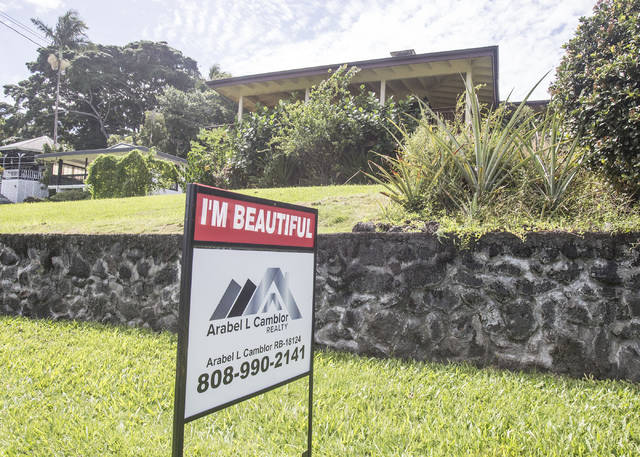HILO — The third quarter of 2018 saw an expected slowdown in the Big Island’s real estate market, but real estate agents remain optimistic.
Multiple listing service data for the Big Island indicates an overall decrease in residential and vacant land sales between July and September of this year, with the former dropping by approximately 10 percent from third quarter of last year and the latter by 23 percent.
At the same time, volume of sales also uniformly decreased over the third quarter, residential sales volume dropping by 25 percent and vacant land volume by 11 percent.
The declines are most pronounced in Puna, where vacant land sales dropped by 36 percent and residential sales dropped by 14 percent. Residential sales volumes, meanwhile, dropped by 20 percent, while vacant land sales volumes dropped by 37 percent.
Data from October continued the trend: across the island, residential land sales remained down by 21 percent, while vacant land sales were down by 29 percent.
This year to date, nearly all residential markets on the island are down to some degree, with only North and South Kohala — which respectively saw 56 and 236 home sales this year so far — seeing any rise from last year.
Nancy Cabral, president of Day-Lum Rentals &Management and Coldwell-Banker Day-Lum Properties, said some of the decline can be tied to lingering effects from the Kilauea eruption, which was active in Puna for much of the third quarter.
“I think the island is going to be less attractive to mainland buyers who are misinformed about the eruption and the different regions on the island,” Cabral said.
However, Julie Hugo, vice president and broker-in-charge at Clark Realty Hugo, said there is still a great deal of “pent-up demand” for housing on the east side of the island, pointing to strong sales of lots at Waiakea Fairways Subdivision in Hilo as an example.
Hugo said the island’s overall lower numbers reflect a “wait-and-see” attitude regarding the future of the volcano, but thinks the market is already well on its way to recovery.
“I don’t expect the market to change very much at all next year,” Hugo said saying many district markets have already returned to last year’s levels.
The numbers may bear out Hugo’s conclusion. In October, South Hilo residential sales were nearly identical to those of October 2017, with only one sale less this year, while Puna residential sales were actually up by one from the same period last year. The majority of the month’s drop in residential sales from last year was caused by flagging sales in North and South Kona, which saw decreases by 45 and 24 percent, respectively.
Cabral said displaced Puna residents seeking new homes using Federal Emergency Management Agency grants have helped keep the Hilo market active through the third quarter, when vacant land sales volumes increased by 45 percent.
Meanwhile, islandwide residential median sales prices have generally increased this year over last year, rising by 1.79 percent to $355,000 this year to date.
Hugo said the eruption may have had a positive impact on homebuyers: prospective buyers are now deeply familiar with the island’s lava zones and what they mean, allowing them to make more educated decisions.
“Make sure you understand where you’re buying and why you’re buying,” Cabral advised.
Email Michael Brestovansky at mbrestovansky@hawaiitribune-herald.com




Housing Bubble 2.0
Realtors: “It’s just a gully, nothing really, just nerves.”